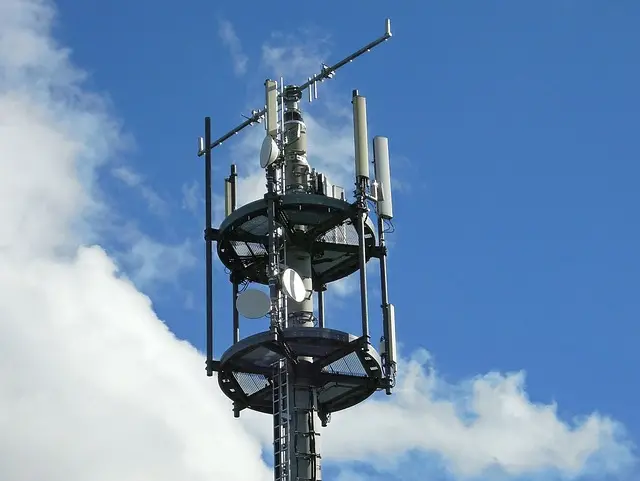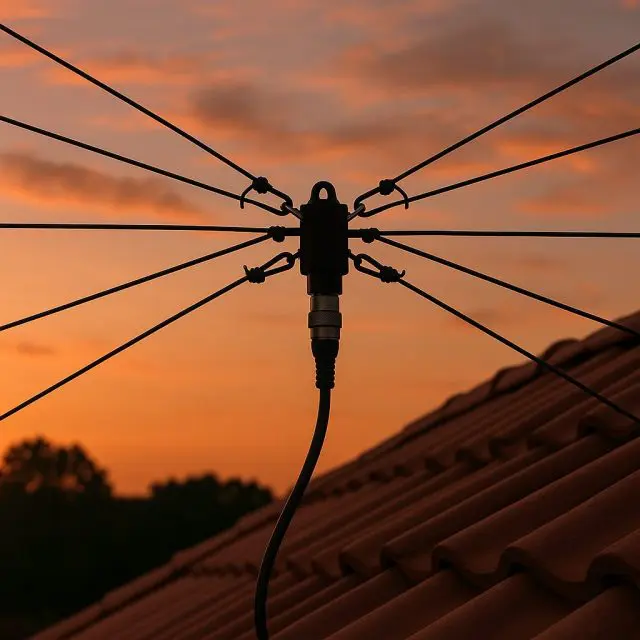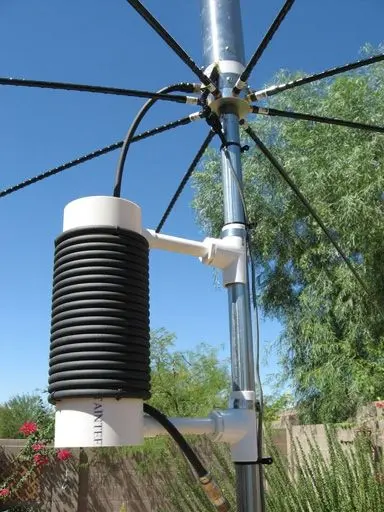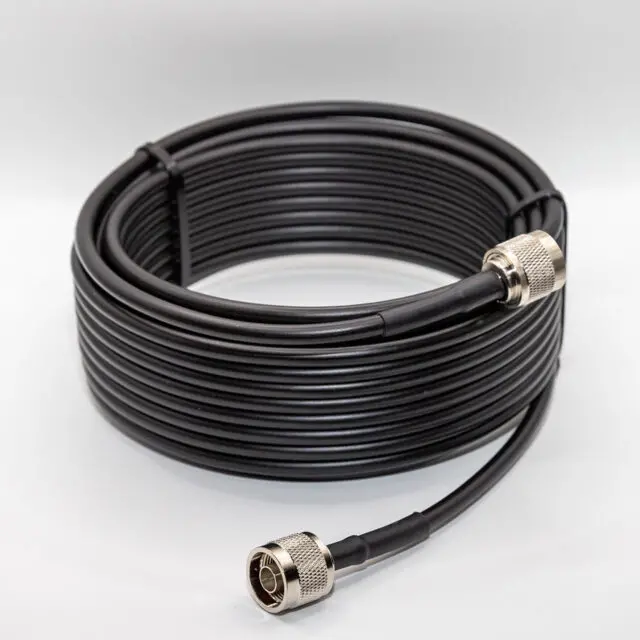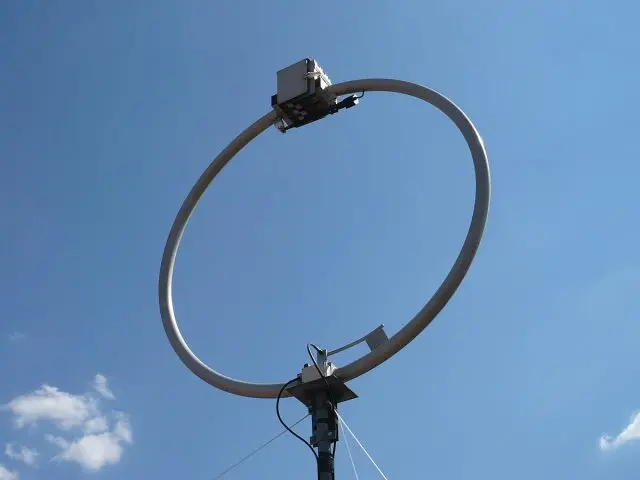Estimate the maximum distance of your radio link based on frequency, transmitter power, antenna gain, and antenna height. The calculator also considers the optical line-of-sight limit — beyond the horizon, communication is not always possible.
Why radio range matters
Radio communication is the backbone of countless technologies, from amateur radio and aviation to Wi-Fi, maritime systems, and emergency services. Understanding the maximum range of a radio link is essential for reliable communication. The distance a signal can travel depends not only on the transmitter and antenna but also on the physics of wave propagation and the Earth’s curvature.
By estimating radio range in advance, operators can optimize antenna placement, choose the right frequency, and ensure reliable coverage for their intended application.
Key factors affecting radio range
Frequency
Radio frequency strongly influences range.
-
Low frequencies (HF, VHF): Longer wavelengths can diffract around obstacles and sometimes reflect from the ionosphere, enabling communication beyond the horizon.
-
Higher frequencies (UHF, SHF): Provide higher data rates but require clear line-of-sight and are more easily blocked by terrain, buildings, and vegetation.
Transmitter power
More power means stronger signals, which can travel further and overcome interference. However, power alone cannot extend communication beyond the optical line-of-sight if no propagation phenomena are present. Regulations also limit transmitter power in many services.
Antenna gain
Antennas concentrate energy in certain directions. High-gain antennas can dramatically extend range by focusing power, but only when properly aligned. Directional antennas are common in point-to-point links, while omnidirectional antennas trade gain for coverage in all directions.
Antenna height
Antenna elevation increases the distance to the radio horizon. Placing antennas on tall towers or hills reduces obstructions and extends range. For example, raising an antenna from 2 meters to 20 meters can add kilometers of extra coverage.
The optical line-of-sight limit
Because the Earth is curved, there is a maximum distance at which two antennas can “see” each other. This is called the radio horizon or optical line-of-sight.
The approximate distance to the horizon (in kilometers) can be calculated as:
d ≈ 3.57 × (√h₁ + √h₂)
where h₁ and h₂ are the antenna heights in meters.
Beyond this distance, direct communication is generally not possible — unless special propagation effects occur. This is why the calculator considers the line-of-sight limit.
Why beyond-horizon communication is not always possible
Although there are situations where radio signals travel beyond the horizon, these are not guaranteed. Factors include:
-
Diffraction: Lower-frequency waves can bend slightly around obstacles, but the effect diminishes at higher frequencies.
-
Atmospheric refraction: The atmosphere can bend signals, extending the effective radio horizon slightly beyond the optical one.
-
Tropospheric ducting: Under certain weather conditions, signals may travel hundreds of kilometers further, but this is unpredictable.
-
Ionospheric reflection: HF signals (3–30 MHz) can bounce off the ionosphere and reach thousands of kilometers, but this does not apply to higher bands like VHF/UHF.
For most practical applications, especially in VHF, UHF, and microwave ranges, reliable communication is limited by line-of-sight.
Environmental and terrain effects
The real-world range is influenced by more than just equipment specifications.
-
Obstacles: Buildings, hills, and forests can absorb or block signals.
-
Weather: Rain, snow, and fog especially affect microwave and millimeter-wave frequencies.
-
Interference: Competing signals, noise, or intentional jamming reduce effective range.
-
Ground conductivity: Coastal areas or water surfaces can enhance propagation, while dry, rocky terrain may reduce it.
Practical tips for extending radio range
-
Place antennas as high as possible to increase line-of-sight.
-
Use directional antennas to focus energy between two points.
-
Choose frequencies that balance range and bandwidth needs.
-
Reduce obstacles in the Fresnel zone (the 3D area around the line-of-sight path).
-
Consider repeater stations to extend coverage.
-
Use high-quality, low-loss coaxial cables and connectors.
Applications of radio range calculation
-
Amateur radio: Planning point-to-point contacts and repeater placement.
-
Emergency services: Ensuring reliable communication in disaster zones.
-
Military and aviation: Planning tactical communication and radar coverage.
-
Wireless networking: Designing Wi-Fi or point-to-point microwave links.
-
Maritime communication: Estimating VHF marine radio coverage.
Amateur radio and DX communication
Amateur radio operators (hams) have long explored the limits of radio range. While VHF and UHF communication is generally restricted to line-of-sight, enthusiasts experiment with long-distance “DX” communication using special propagation modes.
-
Sporadic-E propagation: In the 30–300 MHz range, signals can reflect off ionized patches in the E layer, enabling contacts up to 2000 km.
-
Meteor scatter: Brief reflections from ionized meteor trails allow bursts of communication over hundreds of kilometers.
-
Earth–Moon–Earth (EME): By bouncing signals off the moon, hams can communicate across continents using high-gain antennas and powerful transmitters.
These examples show that while the calculator provides realistic everyday ranges, extraordinary conditions can extend them dramatically.
Military and defense applications
Military communication systems rely heavily on radio range calculations for tactical planning. Short-range VHF/UHF radios connect soldiers and vehicles on the battlefield, while long-range HF systems provide communication over thousands of kilometers.
For radar, line-of-sight limits determine detection ranges. Ground-based radars cannot see targets hidden beyond the horizon, leading to the development of over-the-horizon (OTH) radars, which use ionospheric reflection to detect aircraft and ships at very long distances.
Secure and reliable communication often requires redundancy — multiple frequency bands, satellite links, and relay stations — to ensure operability even in hostile environments.
Maritime and aviation communication
At sea, VHF marine radios are the standard for ship-to-ship and ship-to-shore communication. Range is limited by antenna height: a ship with a 20-meter antenna can typically communicate with another vessel over 30–40 nautical miles away. For longer distances, satellites or HF radio are used.
In aviation, VHF radios are used for air-to-ground and air-to-air communication. Aircraft benefit from high altitude, extending line-of-sight to hundreds of kilometers. However, mountains and terrain still block signals at lower altitudes, requiring relay through air traffic control centers.
Radar and line-of-sight limitations
Radar systems are another application where radio range calculations are critical. A ground-based radar cannot detect aircraft flying below the radar horizon, which creates “blind zones” exploited by military tactics.
For example, low-flying aircraft or cruise missiles can avoid detection by staying below the radar line-of-sight. To mitigate this, radar stations are placed on elevated terrain, towers, or aircraft.
Frequency bands and their practical ranges
Different parts of the radio spectrum behave differently:
-
HF (3–30 MHz): Long-range, often beyond line-of-sight due to ionospheric reflection. Used in maritime, aviation, and amateur DX communication.
-
VHF (30–300 MHz): Mostly line-of-sight, ideal for aviation and maritime. Sometimes extended by Sporadic-E.
-
UHF (300 MHz–3 GHz): Excellent for short-range, high-bandwidth communication. Widely used in Wi-Fi, mobile phones, and military radios.
-
Microwave (3–30 GHz): High capacity for data transmission, used in satellite links and point-to-point microwave relays. Strongly limited by line-of-sight and weather attenuation.
This comparison shows why different services choose different frequency ranges depending on their operational needs.
Case studies and real-world examples
Example 1: Two handheld radios
Two people using 5-watt handheld radios with 1.5-meter antennas can typically communicate over 5–8 km in open terrain. In a city, the range may shrink to less than 2 km due to buildings and interference.
Example 2: Mountain-top repeater
A repeater station with antennas at 1000 meters above sea level can cover 100+ km, depending on surrounding terrain. Amateur radio clubs often use such repeaters to extend VHF/UHF communication.
Example 3: Maritime VHF
A ship with a 25-meter mast can communicate with a coastal station 40 km away. Adding another 25-meter tower on land extends the range to about 70 km.
Example 4: Aviation VHF
An aircraft at 10,000 meters altitude can theoretically have a line-of-sight distance of over 350 km. This explains why air traffic controllers can communicate with planes far beyond the range of ground vehicles.
Future trends in radio communication
The limitations of line-of-sight have inspired new approaches:
-
Tropospheric scatter systems: Using forward scatter to communicate beyond the horizon without satellites.
-
Satellite communications (LEO, MEO, GEO): Overcoming line-of-sight limits by relaying signals via space.
-
Mesh networks: Creating multi-node systems that hop signals beyond single-link limits.
-
5G and beyond: Employing beamforming and advanced antennas to extend coverage in higher frequency bands.
Radio range is determined by a combination of frequency, transmitter power, antenna gain, antenna height, and the unavoidable limit of the radio horizon. While special atmospheric phenomena can sometimes extend communication beyond the horizon, such conditions are not reliable.
From amateur DX contacts to aviation safety and military strategy, understanding the principles of radio range is vital. Using a Radio Range Calculator provides a practical, science-based estimate of coverage, helping operators design more efficient, reliable, and safe communication systems.
Image(s) used in this article are either AI-generated or sourced from royalty-free platforms like Pixabay or Pexels.
Did you enjoy this article? Buy me a coffee!


